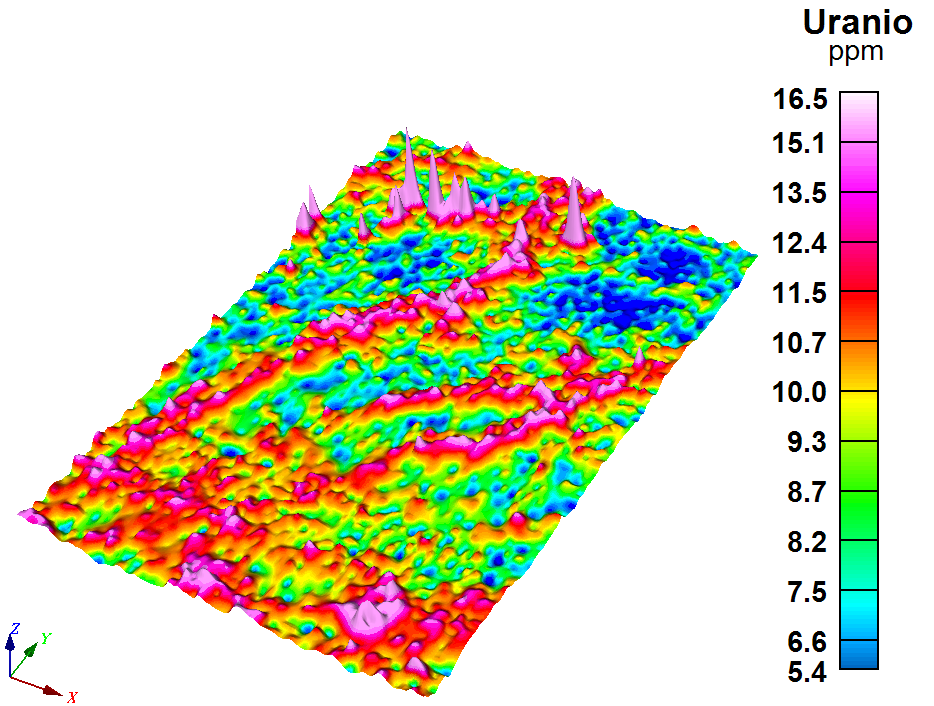NATURAL GAMMA RAY SPECTROMETRY
The natural gamma ray spectrometry method measures the gamma radiation emitted by unstable atomic nuclei of rocks and minerals. The isotopes measured are generally potassium (40K), Thorium (232Th) and Uranium (235U, 238U).
The acquisition method consists in the detection of uranium, potassium and thorium isotopes by means of a scintillation gamma ray spectrometer, these isotopes are recognizable by the decay peaks present in the gamma ray spectrum record measured by the instrument. The measurement is performed continuously (time domain).

Through analysis and interpretation, the method allows the detection of igneous rocks with high radioactive contrasts such as monazite or feldspar-rich pegmatite zones, as well as the detection of pure or contaminated carbonate zones. The method is also usable in geological, geochemical and environmental mapping, allowing the interpretation of regional features over large areas. Natural gamma ray surveys are also applied in soil mapping and mineral exploration. They can be used to estimate and assess terrestrial radiation dose to the human population and to identify areas of potential natural radiation hazard.
